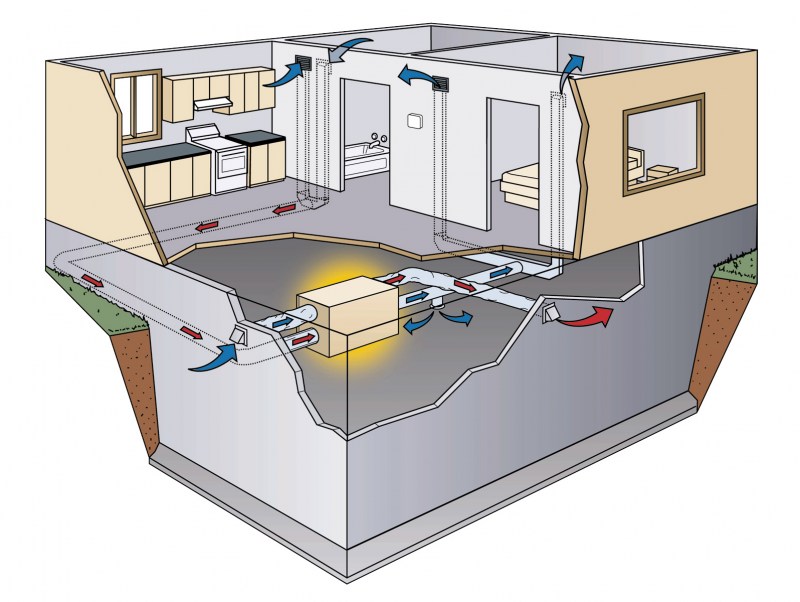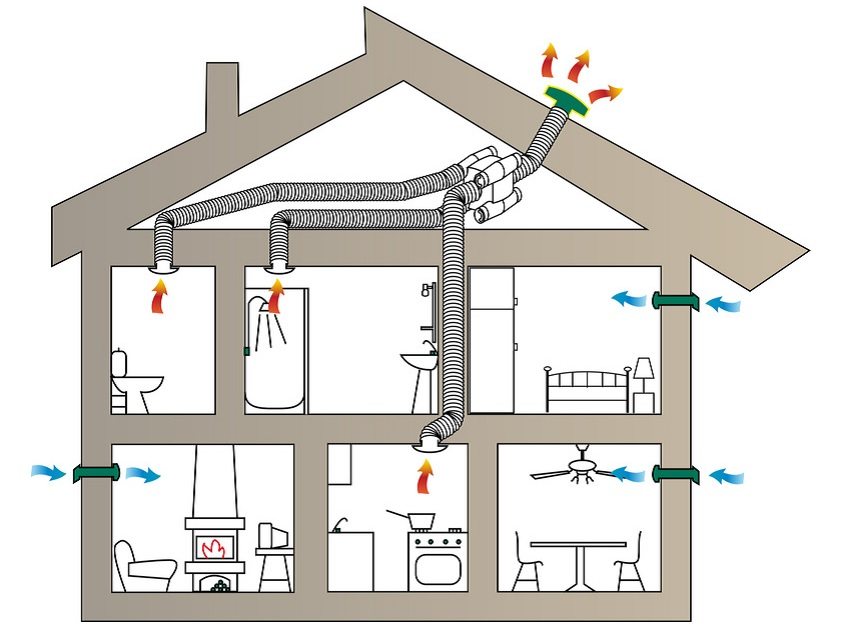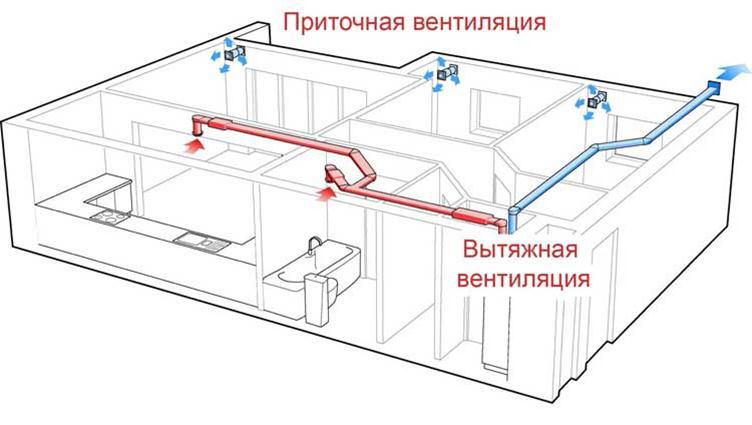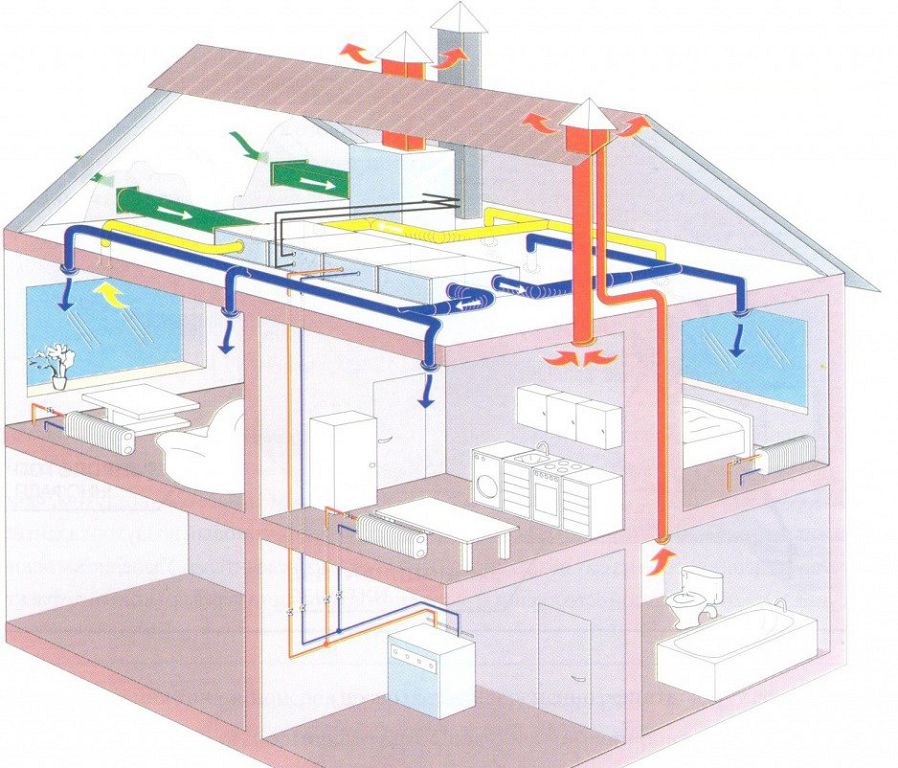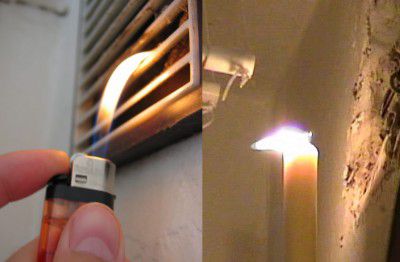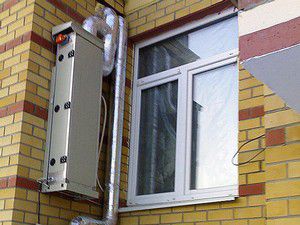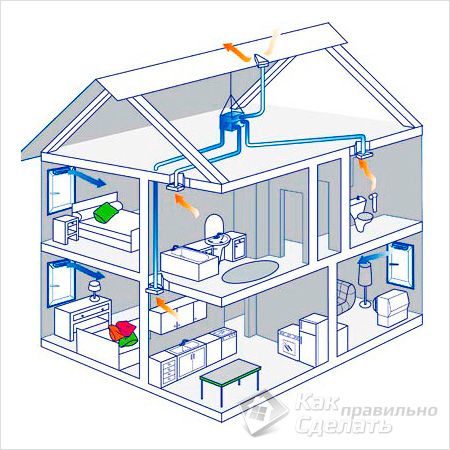Smoke exhaust and ventilation systems necessary in case of fire in the room. They remove the heat and smoke generated during a fire, reducing the air temperature. All mechanisms used to fire ventilation smoke exhaust must be fire resistant for 1 - 2 hours.
The smoke exhaust and ventilation system must provide the ability for people in the building to leave it using fire stairs or in elevators. It is very difficult to accurately calculate the smoke exhaust system, since during a fire there are many factors that cannot be taken into account in advance.
Features of the smoke exhaust and ventilation system
Fire ventilation and smoke extraction are forced.
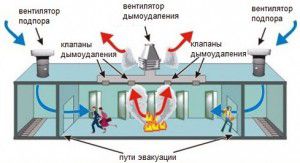
The system is a system of channels attached to each other. They are made from non-combustible materials. Smoke removal is sometimes carried out in a natural way and is provided by the difference in pressure and temperature outside and in the room where the fire occurred. The smoke exhaust and ventilation system is also equipped with a mechanism for supplying air to stairways and fire corridors. The purpose of smoke exhaust fire ventilation is to clear the premises from smoke and soot in the shortest possible time. It differs from conventional ventilation systems in that high-temperature air mixtures must be blown out intensively without affecting the integrity and function of the system. A very powerful blowing flow must be ensured.
If you equip air ducts made of thin metal, it warps, the sealing of the channels is broken and the smoke spreads to other rooms. To prevent this, the channels are isolated in a special way.
Fire ventilation system installation
Installation of smoke exhaust ventilation includes the installation of fire dampers and smoke exhaust dampers. Fire dampers are installed in the places where fire ventilation is connected to the general system. The flap remains open. As soon as the alarm is triggered, the damper is lowered and smoke does not enter the general ventilation duct system. Smoke exhaust valves are installed in the fire ventilation ducts. Fire dampers can be square or round, of different diameters, which are selected for the diameter of the ventilation duct.
Installation of smoke exhaust ventilation involves the installation of only special radial fans. They are not affected by hot mixtures of air, smoke and soot. To prevent smoke from penetrating into elevator shafts, staircases, air is pressurized using pressurized fans.

